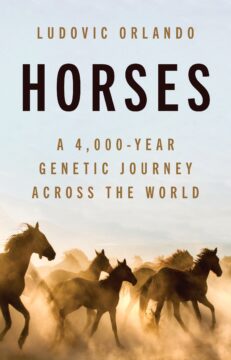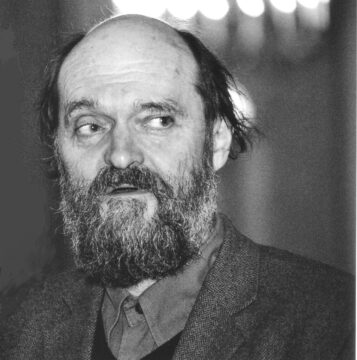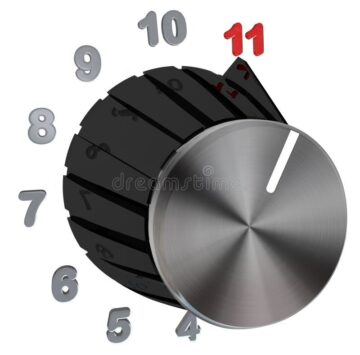David Chaffetz at the Asian Review of Books:
 Some myths take longer to die than others. For students of equine history, the passion that these animals inspire in their owners and breeders often act as a veil, impenetrable for scientists and historians trying to get to the facts. In Horses, Ludovic Orlando, who has been gathering the facts jaw bone by jaw bone for two decades, deploying the latest technology, appears to have pierced the veil, finally, though with many a surprising turn to keep the readers on edge, as though enjoying a detective novel.
Some myths take longer to die than others. For students of equine history, the passion that these animals inspire in their owners and breeders often act as a veil, impenetrable for scientists and historians trying to get to the facts. In Horses, Ludovic Orlando, who has been gathering the facts jaw bone by jaw bone for two decades, deploying the latest technology, appears to have pierced the veil, finally, though with many a surprising turn to keep the readers on edge, as though enjoying a detective novel.
Many of the stories told here have appeared in scientific magazines since the publication of “The origins and spread of domestic horses from the Western Eurasian steppes” in Nature magazine, in 2021. Orlando enlivens these stories, however, by describing his travels to and from England, to the steppes of Kazakhstan and on to the Siberian tundra, where he has his fruitful encounters with colleagues, including William Taylor, Pablo Librado, Alan Outram and Pavel Kuznetzov.
More here.
Enjoying the content on 3QD? Help keep us going by donating now.

 In Urban Fortunes, their foundational work on the economies of cities, urban theorists John Logan and Harvey Molotch argue that the people running American cities no longer care about affordability, a city’s ability to educate children, or the happiness and health of its residents; rather, they are only interested the amount of money a city is able to generate. This focus is not the result of a philosophical bug that’s somehow spread to the brains of city managers everywhere. People such as Richard Florida make the city-as-business philosophy seem appealing, but there’s something bigger going on. Logan and Molotch argue that the city-as-growth-machine is an inherent feature of late capitalism in the United States. Cities, more than being places for people to live, have become ways to produce, manage, attract, and extract capital.
In Urban Fortunes, their foundational work on the economies of cities, urban theorists John Logan and Harvey Molotch argue that the people running American cities no longer care about affordability, a city’s ability to educate children, or the happiness and health of its residents; rather, they are only interested the amount of money a city is able to generate. This focus is not the result of a philosophical bug that’s somehow spread to the brains of city managers everywhere. People such as Richard Florida make the city-as-business philosophy seem appealing, but there’s something bigger going on. Logan and Molotch argue that the city-as-growth-machine is an inherent feature of late capitalism in the United States. Cities, more than being places for people to live, have become ways to produce, manage, attract, and extract capital. A
A Life begins with music. The human body provides the basic musical elements for the soundtrack to fetal development. The rhythmic pulsing of mom’s heartbeat, the rise and fall of her footsteps, the steady rush of her breathing and circulation, the pitch and melody of her voice, and the rumbling staccatos of her digestion all prime the developing fetus to recognize and respond to music postnatally.1,2 Womb sounds shape brain development, form the basis of future language and communication, and program musical dialects into the fleshy enclaves of the body.
Life begins with music. The human body provides the basic musical elements for the soundtrack to fetal development. The rhythmic pulsing of mom’s heartbeat, the rise and fall of her footsteps, the steady rush of her breathing and circulation, the pitch and melody of her voice, and the rumbling staccatos of her digestion all prime the developing fetus to recognize and respond to music postnatally.1,2 Womb sounds shape brain development, form the basis of future language and communication, and program musical dialects into the fleshy enclaves of the body.
 This one time, my dad bought me a house in Providence, Rhode Island. It was a two-story fake Colonial with yellow aluminum siding on Hawkins Street. We bought it from the bank for $55,000; it was one of many properties under foreclosure in the city in 2009. Dad and I had spent a few days driving around and looking at these houses. In one driveway, I found a dirty playing card depicting the biggest penis I could ever imagine—I still have it. In one basement, the realtor had to disclose, the former owner had tied his girlfriend’s lover to a chair, tortured him, and then shot him in the head.
This one time, my dad bought me a house in Providence, Rhode Island. It was a two-story fake Colonial with yellow aluminum siding on Hawkins Street. We bought it from the bank for $55,000; it was one of many properties under foreclosure in the city in 2009. Dad and I had spent a few days driving around and looking at these houses. In one driveway, I found a dirty playing card depicting the biggest penis I could ever imagine—I still have it. In one basement, the realtor had to disclose, the former owner had tied his girlfriend’s lover to a chair, tortured him, and then shot him in the head.

 Most people in AI safety (including me) are uncertain and confused and looking for least-bad incremental solutions. We think AI will probably be an exciting and transformative technology, but there’s some chance, 5 or 15 or 30 percent, that it might turn against humanity in a catastrophic way. Or, if it doesn’t, that there will be something less catastrophic but still bad – maybe humanity gradually fading into the background, the same way kings and nobles faded into the background during the modern era. This is scary, but AI is coming whether we like it or not, and probably there are also potential risks from delaying too hard. We’re not sure exactly what to do, but for now we want to build a firm foundation for reacting to any future threat. That means keeping AI companies honest and transparent, helping responsible companies like Anthropic stay in the race, and investing in understanding AI goal structures and the ways that AIs interpret our commands. Then at some point in the future, we’ll be close enough to the actually-scary AI that we can understand the threat model more clearly, get more popular buy-in, and decide what to do next.
Most people in AI safety (including me) are uncertain and confused and looking for least-bad incremental solutions. We think AI will probably be an exciting and transformative technology, but there’s some chance, 5 or 15 or 30 percent, that it might turn against humanity in a catastrophic way. Or, if it doesn’t, that there will be something less catastrophic but still bad – maybe humanity gradually fading into the background, the same way kings and nobles faded into the background during the modern era. This is scary, but AI is coming whether we like it or not, and probably there are also potential risks from delaying too hard. We’re not sure exactly what to do, but for now we want to build a firm foundation for reacting to any future threat. That means keeping AI companies honest and transparent, helping responsible companies like Anthropic stay in the race, and investing in understanding AI goal structures and the ways that AIs interpret our commands. Then at some point in the future, we’ll be close enough to the actually-scary AI that we can understand the threat model more clearly, get more popular buy-in, and decide what to do next. We can’t just have a country where people, being people, get mad and rowdy every once in a while and shout at or beat each other up. No, we have to live a country where people are constantly murdering other people.
We can’t just have a country where people, being people, get mad and rowdy every once in a while and shout at or beat each other up. No, we have to live a country where people are constantly murdering other people. A woman gnaws at her nails: one hand in her mouth, the other clutching the shaft of a mop, which serves as one bar of a prison cell composed of cleaning products. It’s an apt metaphor. In mid-century America, housewives were expected to polish their own gilded cages without considering how their feelings of entrapment might be related to their imprisonment in suburban homes. But by the late 1960s, even advertisers recognized that women might find such lives a little upsetting after reading The Feminine Mystique.
A woman gnaws at her nails: one hand in her mouth, the other clutching the shaft of a mop, which serves as one bar of a prison cell composed of cleaning products. It’s an apt metaphor. In mid-century America, housewives were expected to polish their own gilded cages without considering how their feelings of entrapment might be related to their imprisonment in suburban homes. But by the late 1960s, even advertisers recognized that women might find such lives a little upsetting after reading The Feminine Mystique. “We are all Sally Mann now,” one might think, gazing at the social-media streams that
“We are all Sally Mann now,” one might think, gazing at the social-media streams that  I’m sure it’s my interest in knowing what’s normal as much as my interest in porn that led me, a few months ago, to pick up a copy of Porn, by Polly Barton. Subtitled “an oral history” and put out by the highbrow independent press Fitzcarraldo Editions, Porn is billed on the back cover as a “thrilling, thought-provoking, revelatory, revealing, joyfully informative and informal exploration of a subject that has always retained an element of the taboo.” It’s organized as a series of “chats” between the author and nineteen acquaintances, varied across age and gender and anonymized so that each subject is referred to with a number from one to nineteen. Barton is a translator who found herself surprised by the realization that she wanted to write about the ever-present but largely unspoken subject of porn, so much so that the idea kept her up at night. This preoccupation felt “deeply embarrassing” to her: “If only I was a porn connoisseur,” she writes regretfully. Her “predominant feeling towards porn,” she continues in the introduction,
I’m sure it’s my interest in knowing what’s normal as much as my interest in porn that led me, a few months ago, to pick up a copy of Porn, by Polly Barton. Subtitled “an oral history” and put out by the highbrow independent press Fitzcarraldo Editions, Porn is billed on the back cover as a “thrilling, thought-provoking, revelatory, revealing, joyfully informative and informal exploration of a subject that has always retained an element of the taboo.” It’s organized as a series of “chats” between the author and nineteen acquaintances, varied across age and gender and anonymized so that each subject is referred to with a number from one to nineteen. Barton is a translator who found herself surprised by the realization that she wanted to write about the ever-present but largely unspoken subject of porn, so much so that the idea kept her up at night. This preoccupation felt “deeply embarrassing” to her: “If only I was a porn connoisseur,” she writes regretfully. Her “predominant feeling towards porn,” she continues in the introduction,